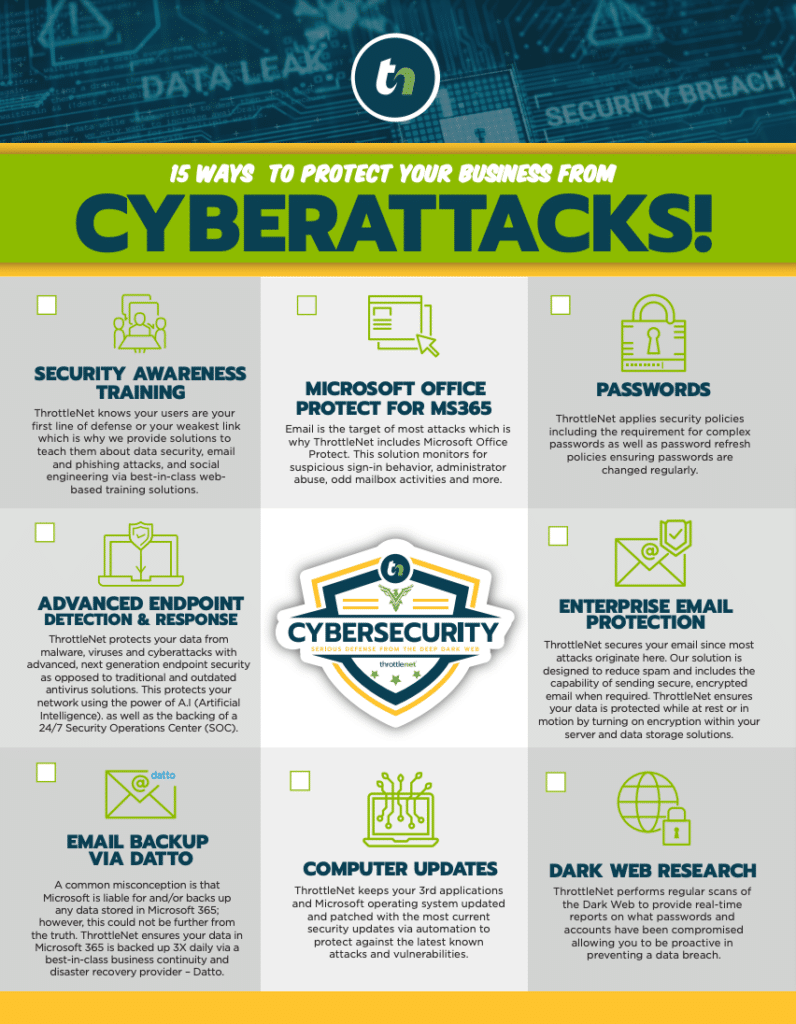As networks become more complex and cyberattacks more sophisticated, a new approach to cybersecurity called Zero Trust Architecture (ZTA) has emerged. Zero Trust operates under a simple principle: “Never trust, always verify.” In this article, we’ll define what Zero Trust Architecture is and explore how businesses can use it to protect themselves against modern cyberthreats.

What is Zero Trust Architecture?
Zero Trust Architecture (ZTA) is a cybersecurity framework that assumes that threats can come from inside or outside the network. It requires strict verification for every user, device, and application attempting to access resources, regardless of whether they are inside or outside the organization’s network perimeter.
Unlike traditional security models that rely heavily on perimeter defenses (like firewalls), Zero Trust assumes that every attempt to access data or resources is a potential threat. It requires users and devices to continuously authenticate, authorize, and validate trust before being granted access to sensitive information or systems.
Key Principles of Zero Trust Architecture
- Continuous Verification: Every access request, whether from inside or outside the network, is verified and authenticated. This includes users, devices, and applications, all of which must prove their legitimacy before accessing any resource.
- Least-Privilege Access: Users and devices are given the minimum level of access necessary to perform their tasks. This limits the potential damage that could result from a compromised account, as attackers can only access a limited set of resources.
- Micro-Segmentation: The network is divided into smaller, isolated segments, limiting access to only the specific parts of the network necessary for an operation. This approach reduces the likelihood of a threat moving laterally across the network.
- Multi-Factor Authentication (MFA): MFA is a cornerstone of Zero Trust, requiring users to provide multiple forms of verification before gaining access. This adds an extra layer of security and reduces the risk of credential-based attacks.
- Device Security: Zero Trust extends to device verification, ensuring that devices accessing the network are secure and compliant with organizational policies.
- Real-Time Monitoring and Analytics: Continuous monitoring, behavioral analytics, and machine learning are used to detect anomalies, suspicious behavior, and potential threats in real-time.
How Businesses Can Implement Zero Trust Architecture
Implementing Zero Trust Architecture requires more than just deploying specific tools; it involves adopting a new security mindset and rethinking network architecture. Here’s how businesses can start implementing Zero Trust to protect against cyberthreats:
1. Identify and Classify Resources
Begin by identifying all critical assets, data, applications, and services within the organization. Understanding what needs protection is the first step toward building a Zero Trust model.
Classify resources based on their level of sensitivity and business value, and ensure that security policies reflect these classifications. This allows you to apply appropriate access controls and segment resources effectively.
2. Implement Strong Identity and Access Management (IAM)
Deploy a robust Identity and Access Management (IAM) solution that supports user authentication and authorization. This should include features like Multi-Factor Authentication (MFA), Single Sign-On (SSO), and adaptive access controls.
Enforce least-privilege access by restricting users’ access to only the data and systems necessary for their roles. Regularly review and update access permissions to ensure they are still appropriate and in line with current roles.
3. Deploy Micro-Segmentation
Use micro-segmentation to divide the network into smaller, more secure zones. This limits lateral movement in the event of a breach, as attackers cannot easily move from one part of the network to another.
Implement network access controls that restrict communication between segments based on need. For example, limit access between the HR department’s network and the accounting department’s network to only what is necessary for collaboration.
4. Enhance Device Security and Compliance
Ensure that all devices accessing the network are secure, whether they are company-issued or personal devices. This includes laptops, mobile devices, and IoT devices.
Use endpoint detection and response (EDR) solutions to monitor and enforce device compliance. If a device is not up-to-date with security patches or does not meet compliance standards, restrict its access to sensitive data and resources.
5. Implement Continuous Monitoring and Analytics
Deploy real-time monitoring and analytics tools to continuously track user behavior, network traffic, and access requests. Use machine learning to detect unusual behavior, such as abnormal login patterns or unauthorized access attempts.
Anomalies should trigger automatic responses, such as requiring re-authentication or alerting security teams for further investigation. This proactive approach helps detect threats early and reduces response times.
6. Use Encryption for Data Security
Ensure that all data is encrypted both at rest and in transit. This protects sensitive information even if an attacker gains unauthorized access to the network.
Use VPNs, SSL, and TLS protocols to secure communications between users, devices, and applications, ensuring that data remains protected from interception and tampering.
7. Regularly Review and Update Security Policies
Zero Trust is not a “set-it-and-forget-it” model. Regularly review and update security policies to reflect changes in the business environment, user roles, and emerging cyberthreats.
Conduct frequent security audits to ensure compliance with Zero Trust principles, identify vulnerabilities, and validate that security measures are working as intended.
8. Establish a Security-Aware Culture
Educate employees about the Zero Trust model and its importance in protecting the organization. Ensure they understand how MFA, least-privilege access, and other Zero Trust components impact their daily workflows.
Encourage employees to adopt security best practices, such as not sharing passwords, being cautious of phishing attempts, and promptly reporting any suspicious activity.
How Zero Trust Protects Against Cyberthreats
Zero Trust is designed to address a wide range of cyberthreats by reducing the attack surface and limiting an attacker’s ability to move laterally across the network. Here’s how it protects against specific threats:
1. Insider Threats
Zero Trust assumes that potential threats can originate from within the network, such as disgruntled employees, contractors, or compromised accounts. By enforcing continuous verification and least-privilege access, Zero Trust limits the damage that insiders can cause.
2. Ransomware and Malware
With micro-segmentation and strict access controls, Zero Trust limits the spread of malware or ransomware within the network. Even if malware gains access to a single endpoint, it will have limited ability to move laterally to other segments or resources.
3. Phishing Attacks
By requiring MFA for all access attempts, Zero Trust reduces the risk of credential-based attacks commonly initiated through phishing. Even if attackers obtain valid credentials, they will still need to pass additional verification steps.
4. Supply Chain Attacks
Supply chain attacks often exploit trusted third parties to gain access to the network. Zero Trust verifies and restricts third-party access, requiring continuous authentication and monitoring to detect any abnormal activity from vendors or partners.
5. Advanced Persistent Threats (APTs)
APTs aim to maintain undetected access to networks for extended periods. Zero Trust’s continuous monitoring, real-time analytics, and micro-segmentation prevent attackers from moving freely within the network and make it easier to detect unusual behavior
The Benefits of Implementing Zero Trust
The benefits of adopting Zero Trust Architecture extend beyond enhanced security:
- Reduced Risk Exposure: With continuous verification and segmented networks, businesses reduce the likelihood of data breaches, ransomware attacks, and other cyberthreats.
- Improved Compliance: Zero Trust helps businesses meet regulatory requirements, such as HIPAA, GDPR, and CCPA, by ensuring that access controls and data protection measures are in place.
- Increased Flexibility: Zero Trust is adaptable to changing work environments, making it well-suited for securing remote work, cloud environments, and hybrid IT infrastructures.
Zero Trust Architecture represents a fundamental shift in how businesses approach cybersecurity. By assuming that no user, device, or network segment is inherently trustworthy, Zero Trust offers a comprehensive defense against today’s most sophisticated cyberthreats. Implementing Zero Trust can seem complex, but it is a necessary step in protecting sensitive data, meeting compliance requirements, and maintaining a strong security posture in an increasingly hostile digital landscape.
Embracing the principles of Zero Trust is not just about deploying new tools; it’s about adopting a new security mindset that prioritizes continuous verification, least-privilege access, and real-time threat detection—ultimately creating a safer, more resilient organization.

Chris Montgomery
ThrottleNet Sales Director
[email protected]



